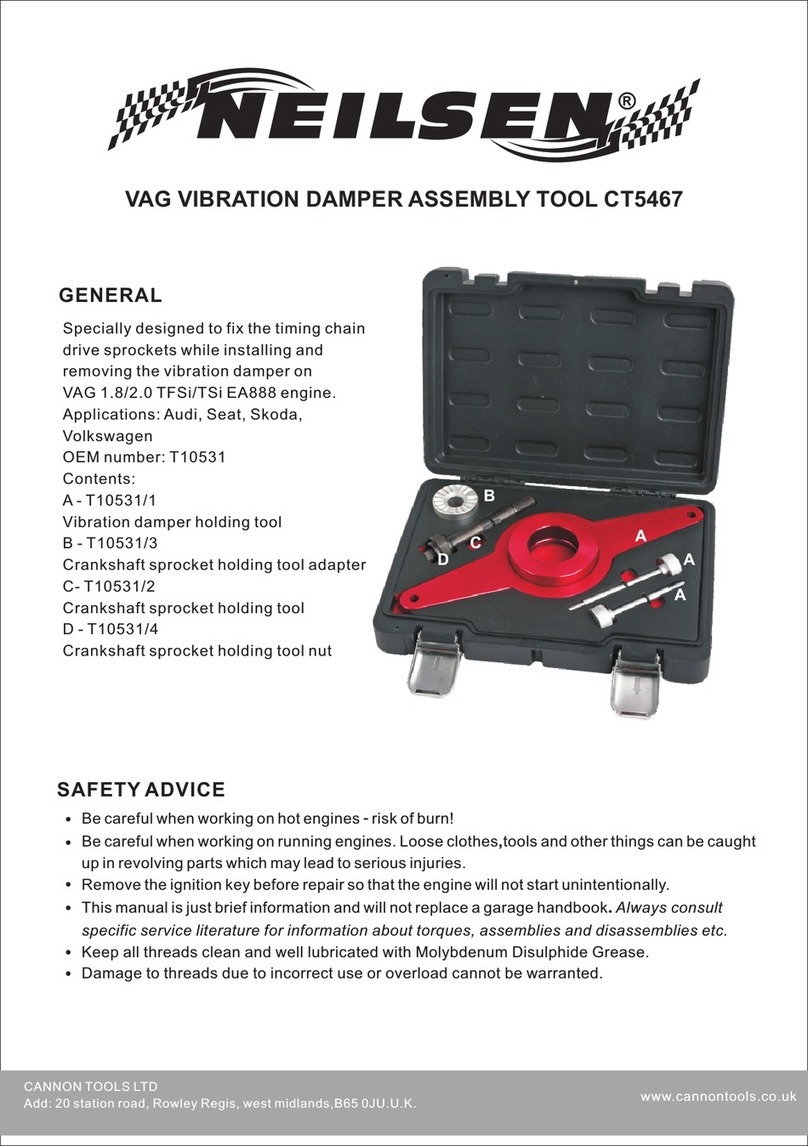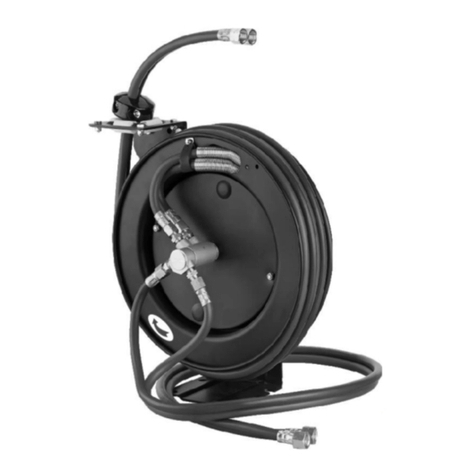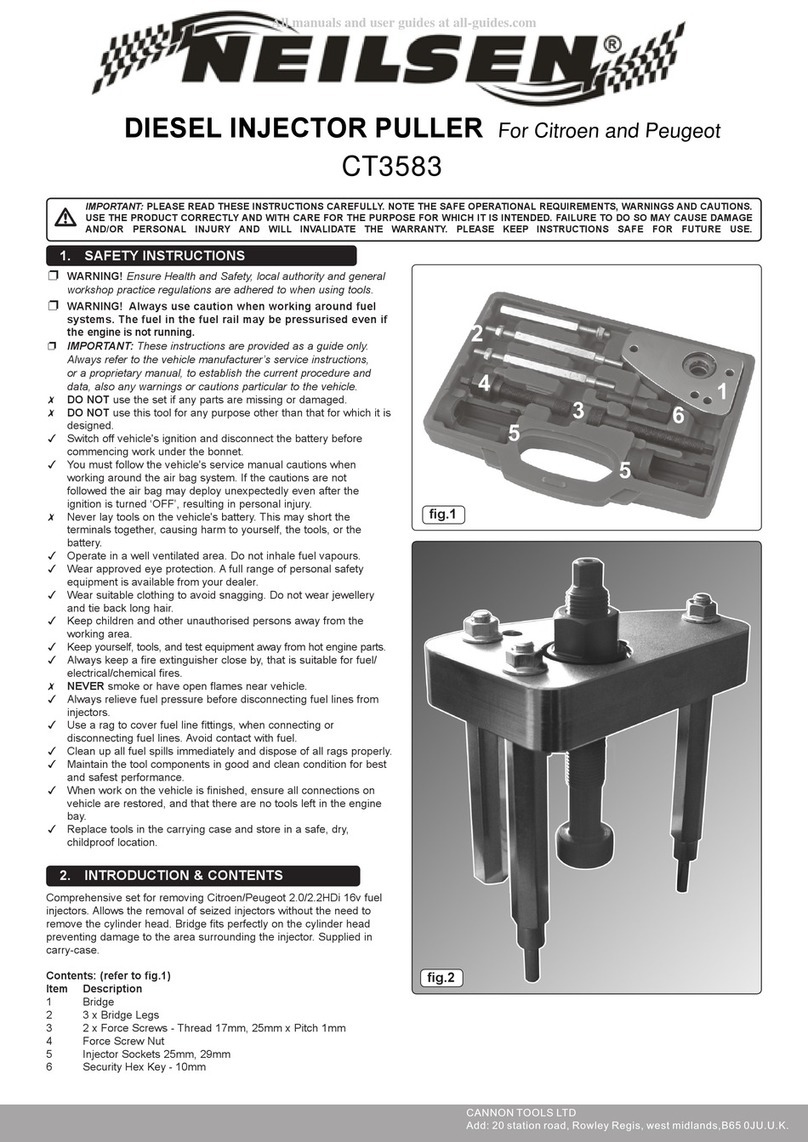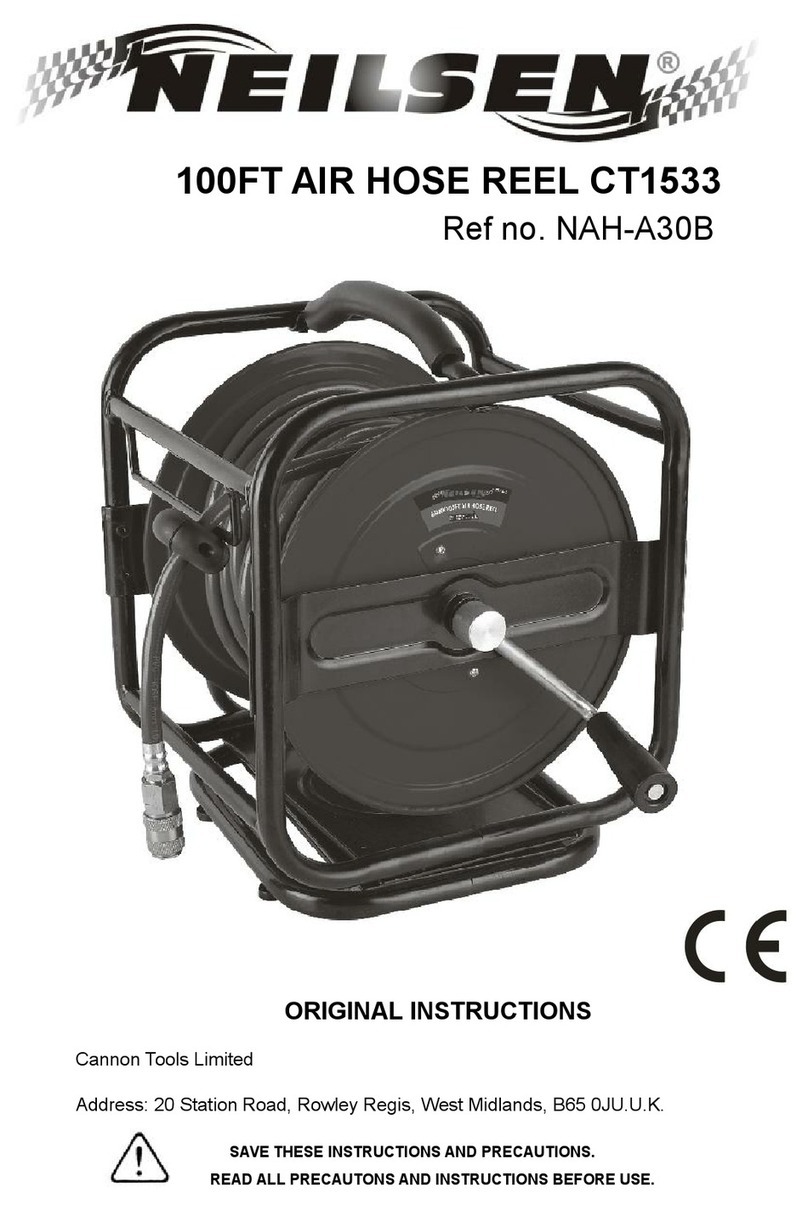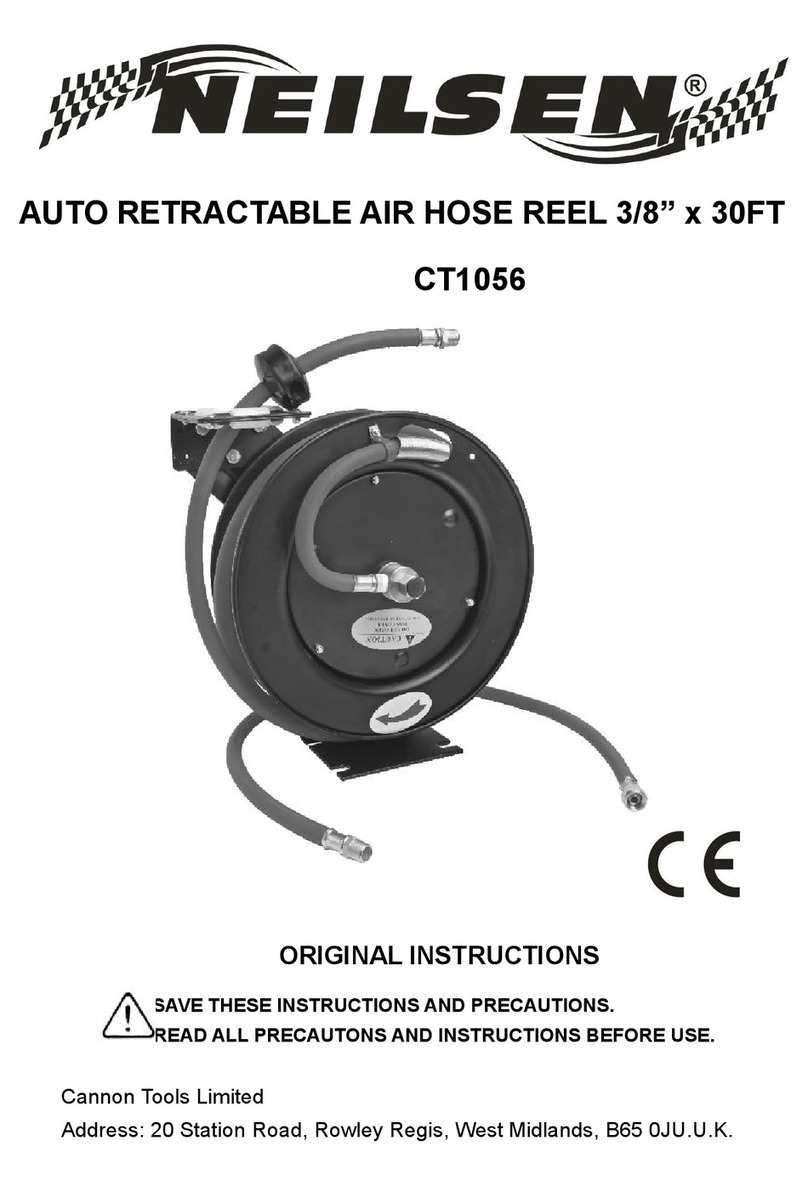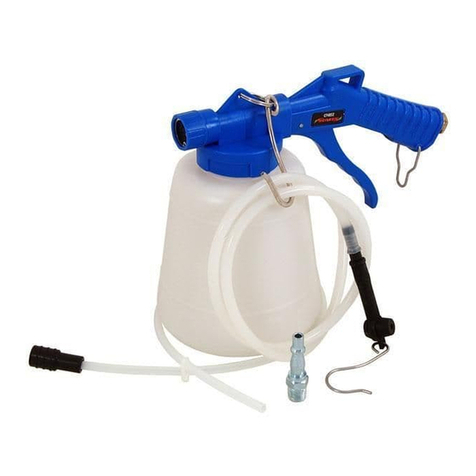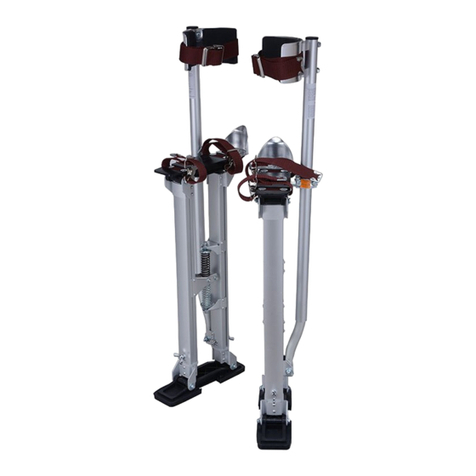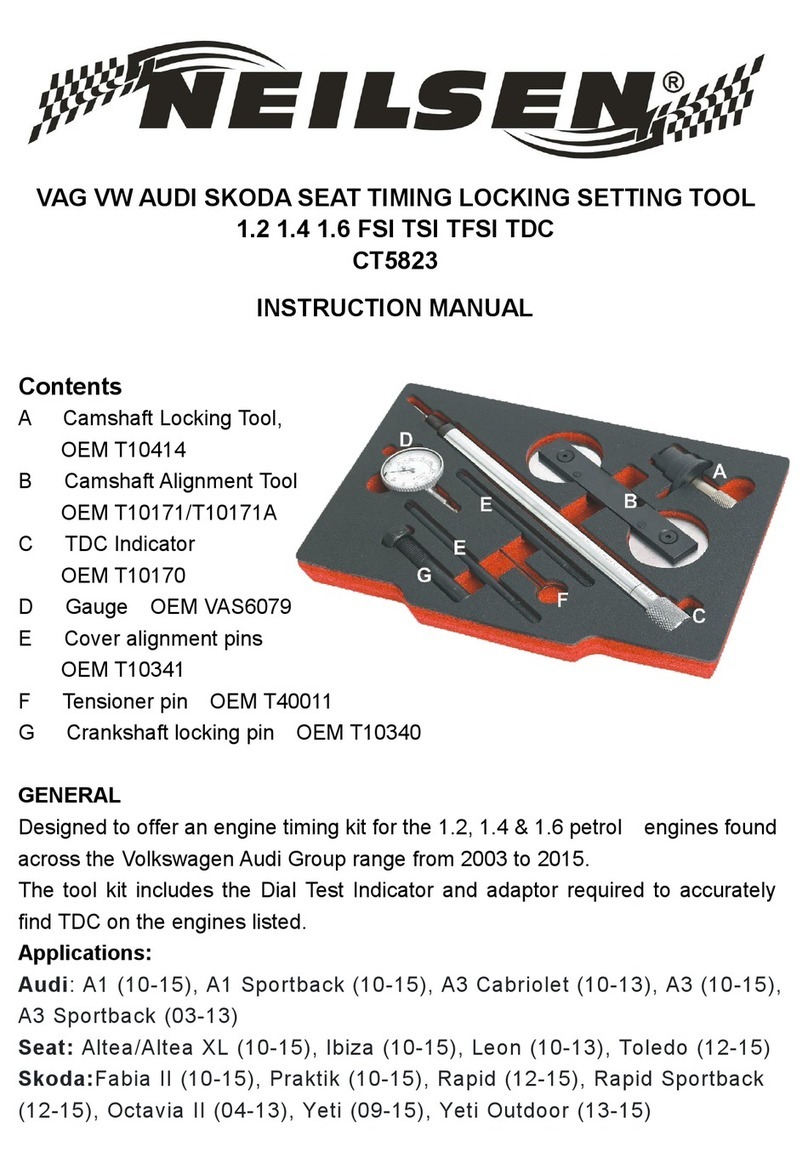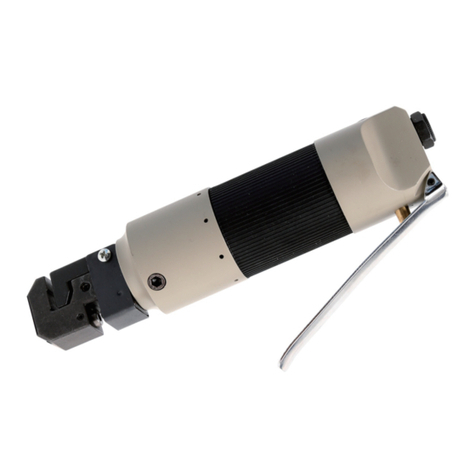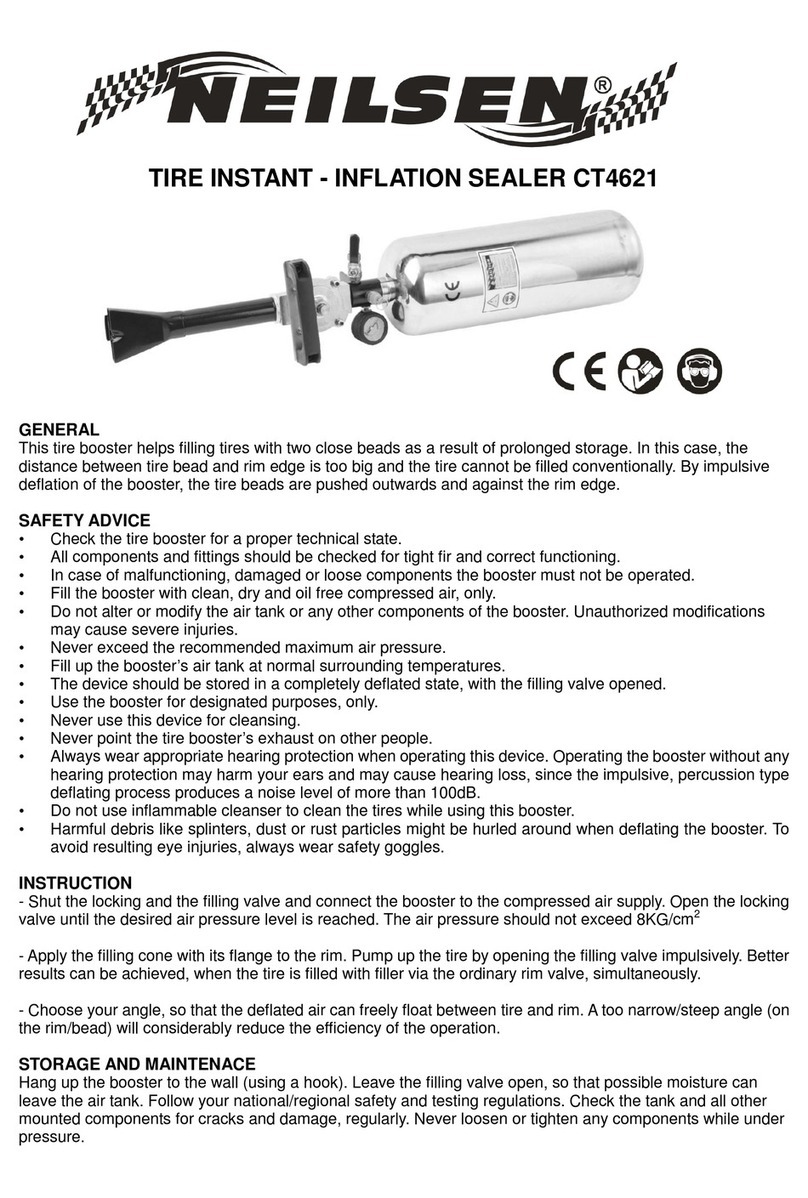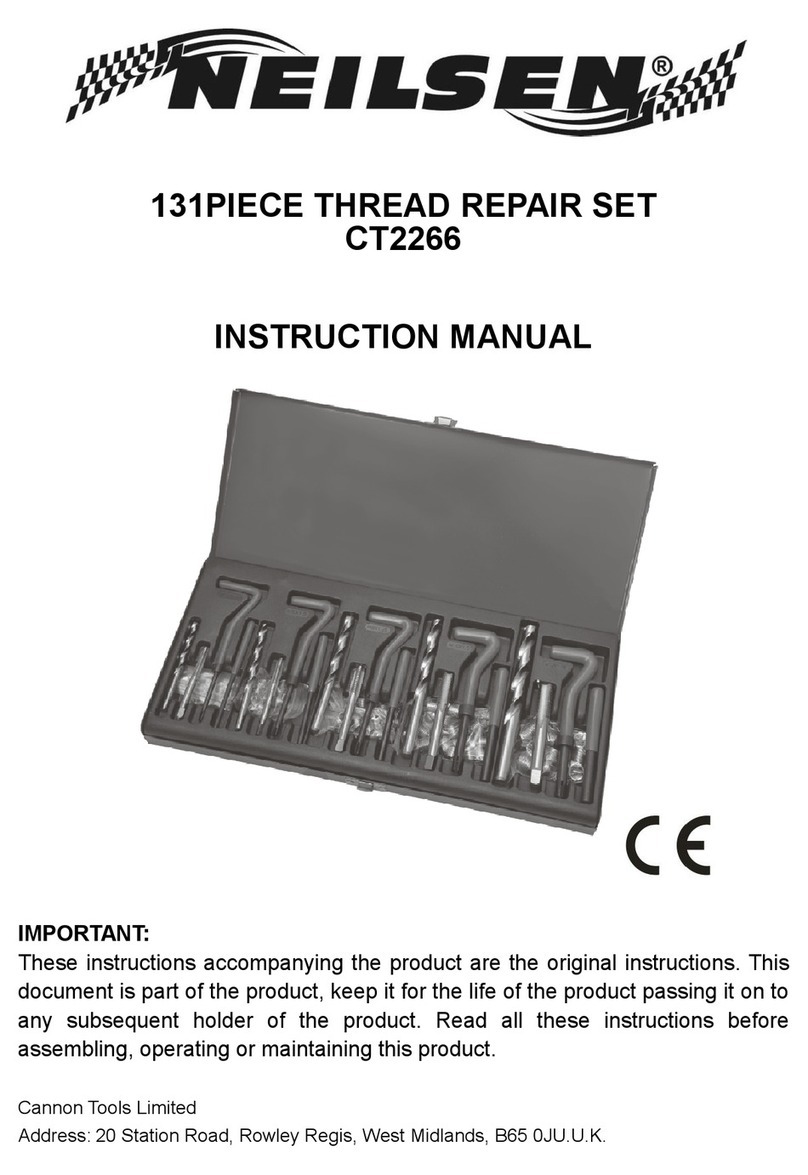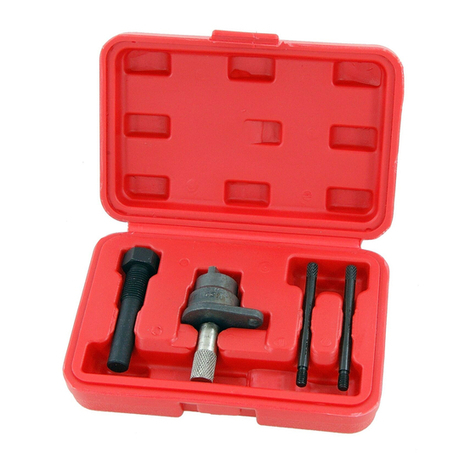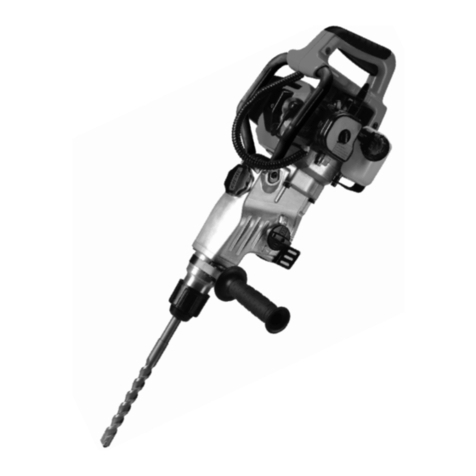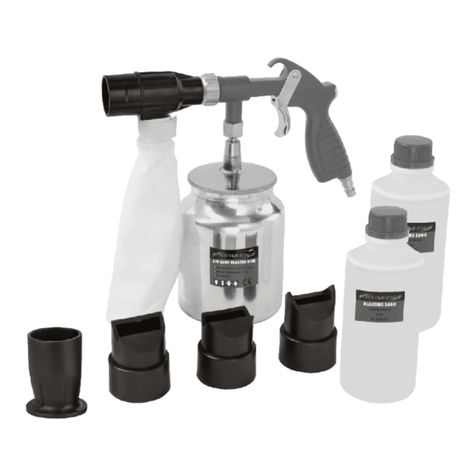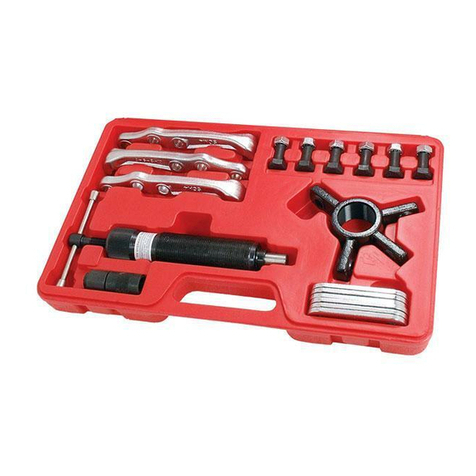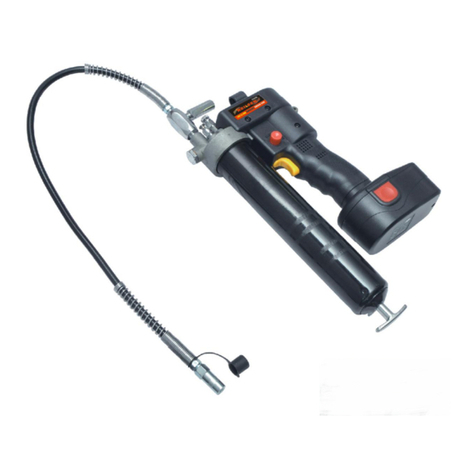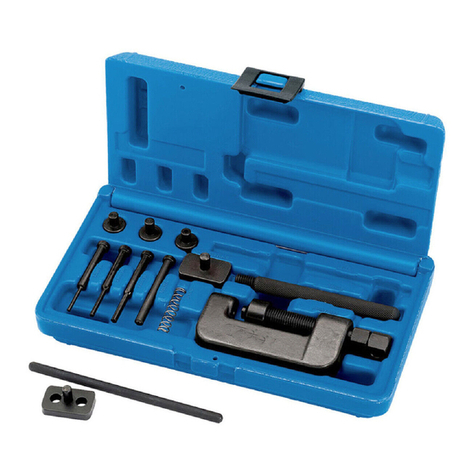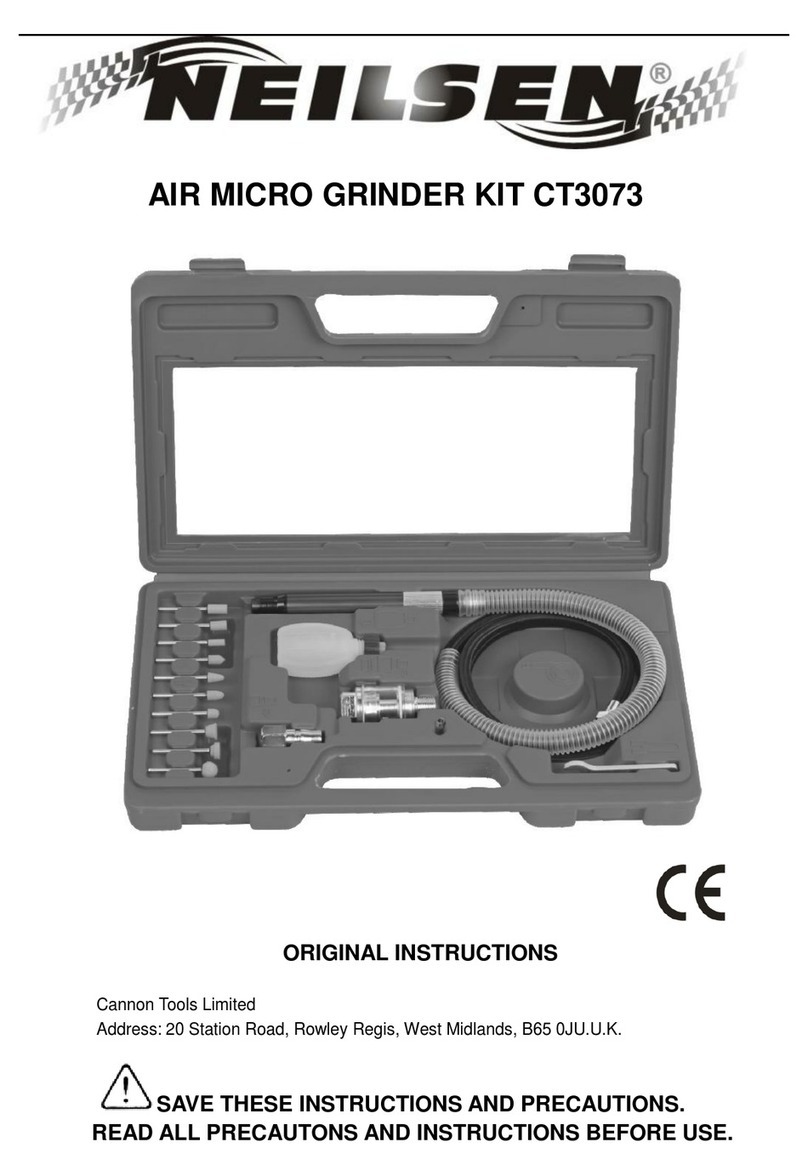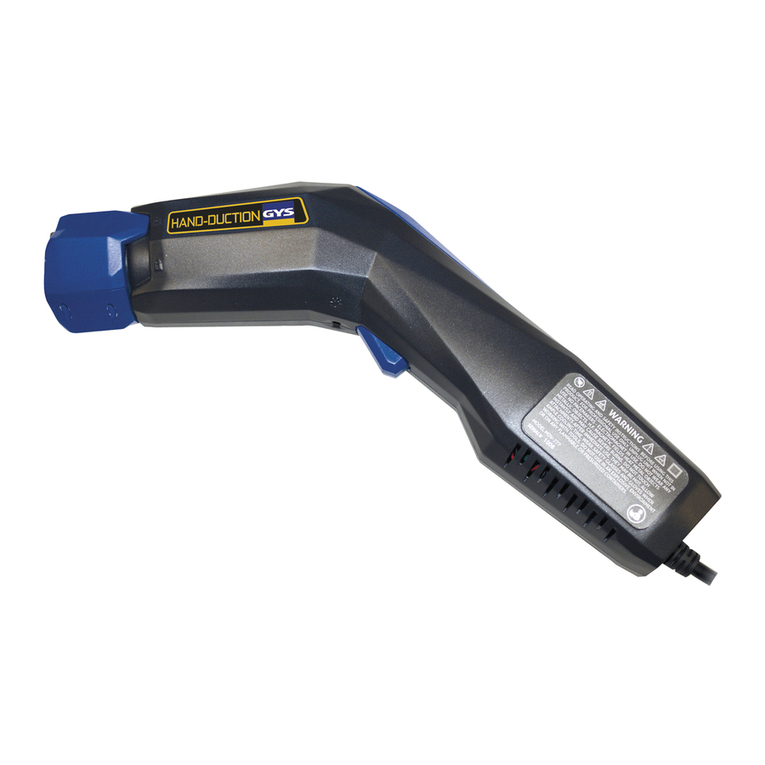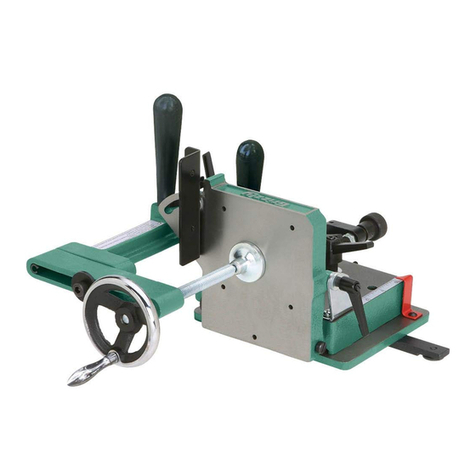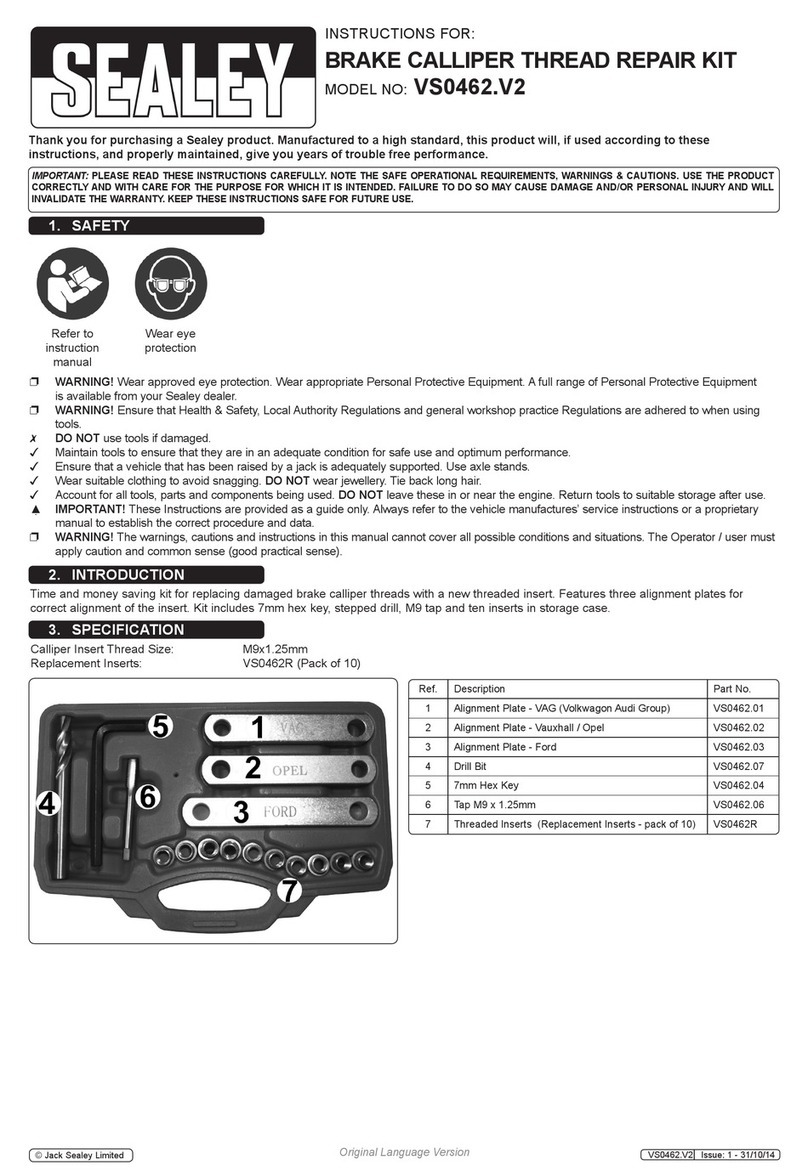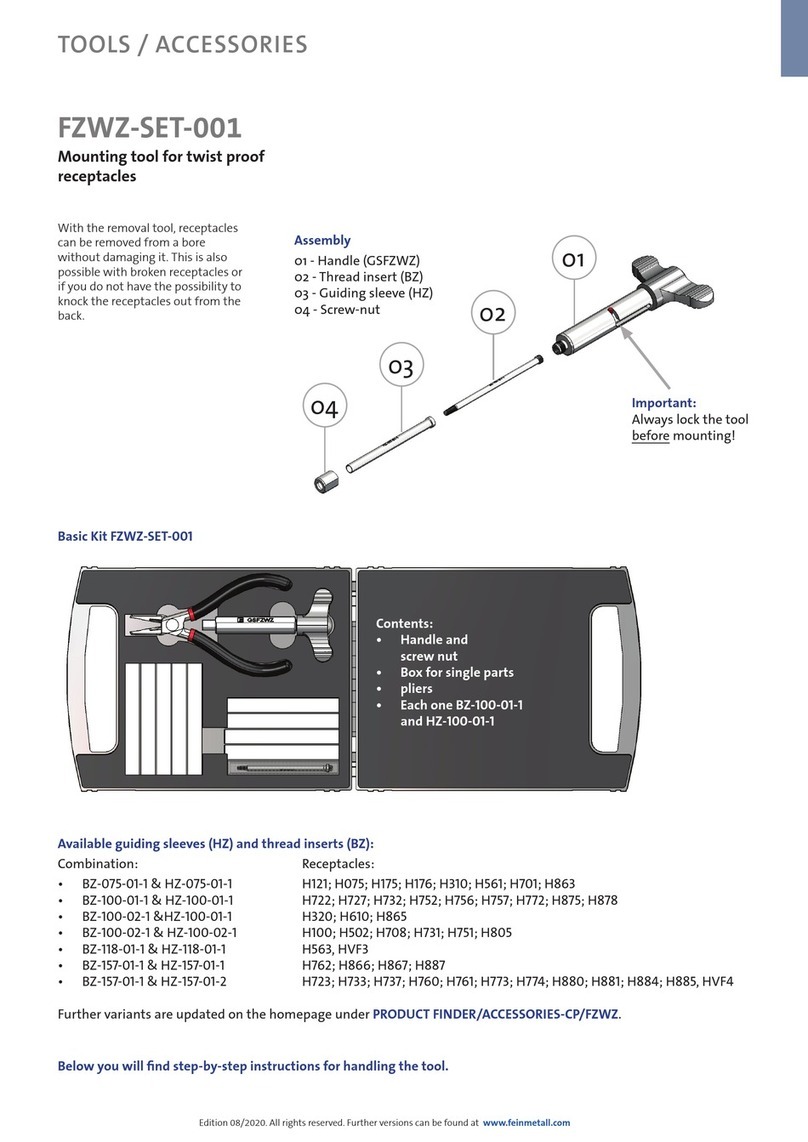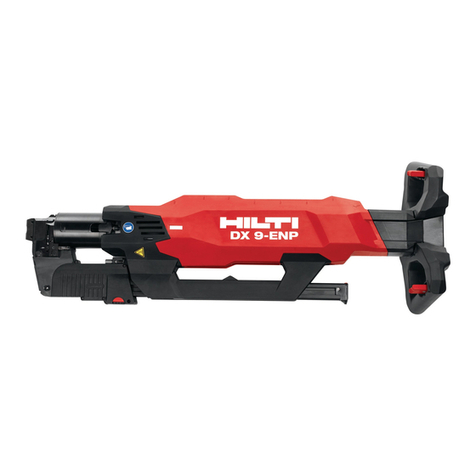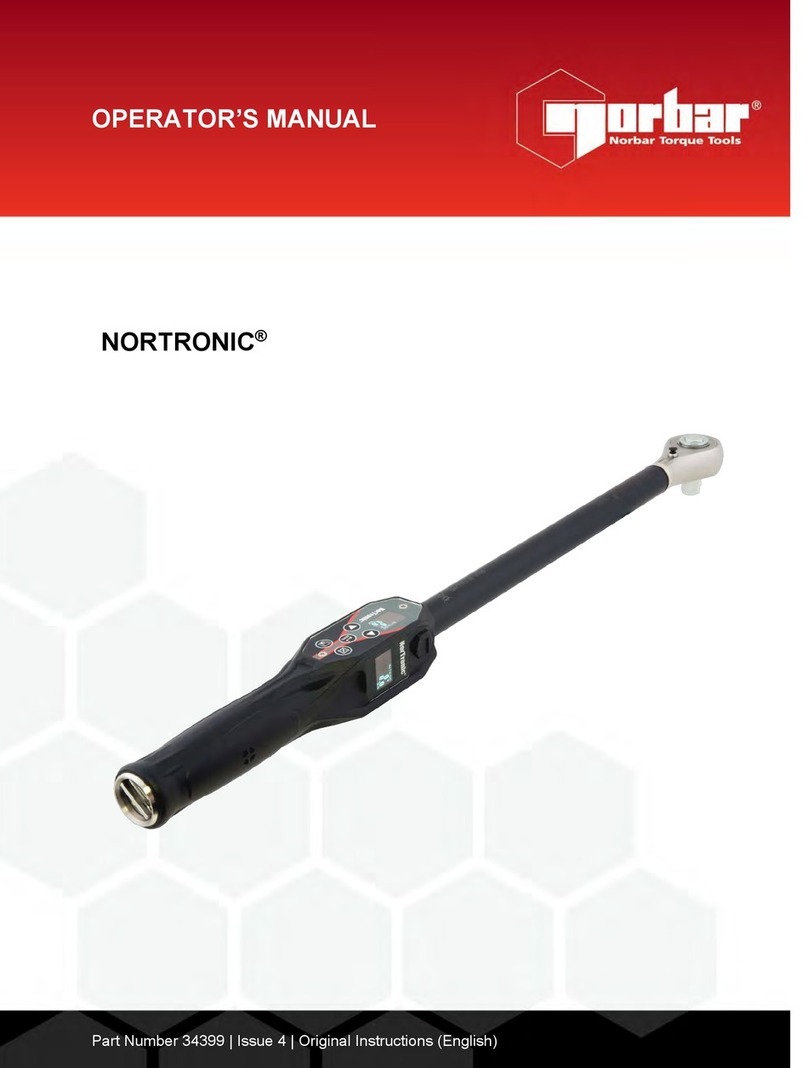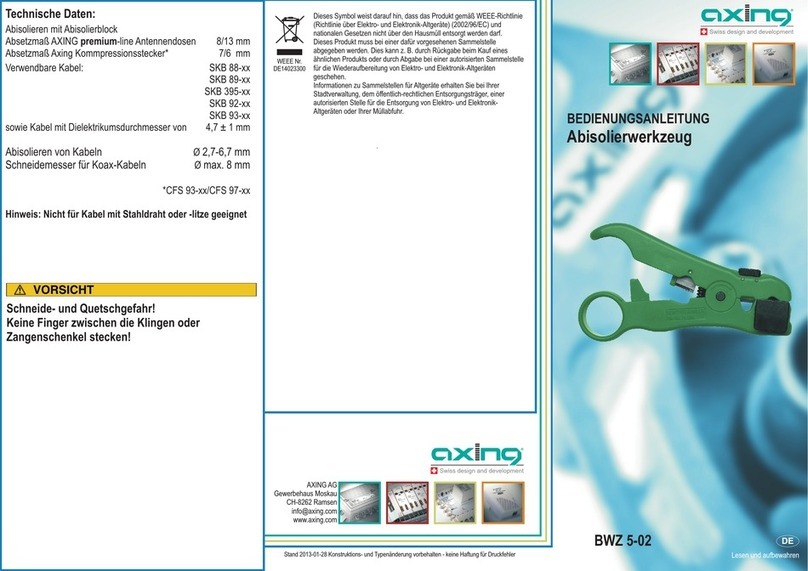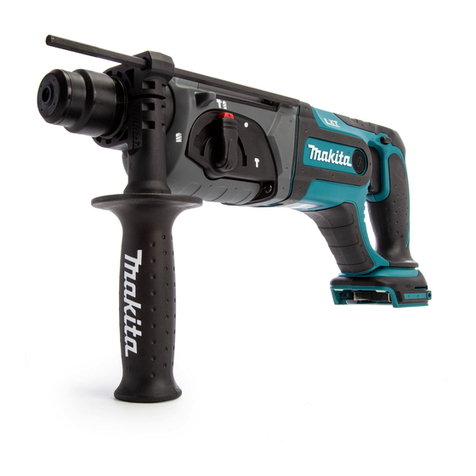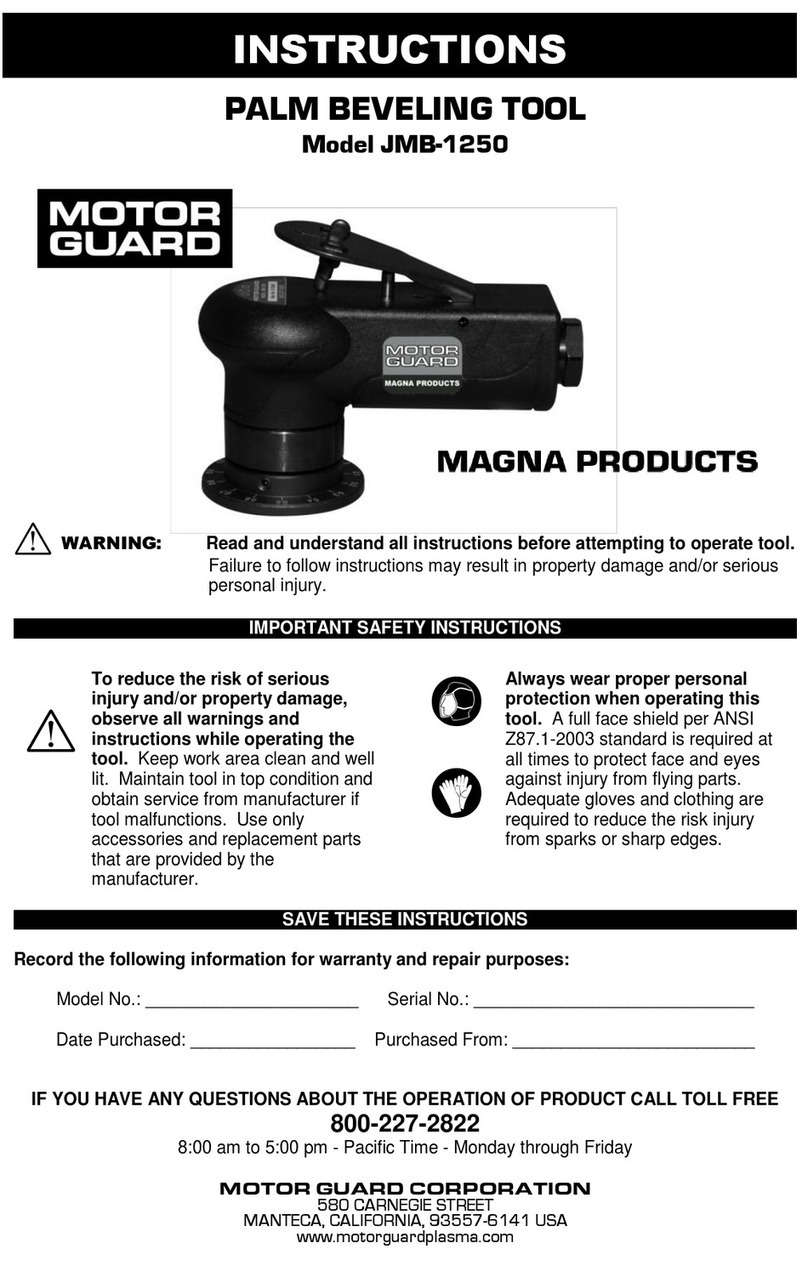
4
and gloves away from moving parts. Loose clothes, jewelry, or long hair increases the risk of
injury to persons as a result of being caught in moving parts.
zAvoid unintentional starting. Be sure the switch is off before connecting to the air supply. Do
not carry the tool with your finger on the switch or connect the tool to the air supply with the
switch on.
zRemove adjusting keys and wrenches before turning the tool on. A wrench or key that is left
attached to a rotating part of the tool increases the risk of personal injury.
zDo not overreach. Keep proper footing and balance at all times. Proper footing and balance
enables better control of the tool in unexpected situations.
zUse safety equipment. A dust mask, non-skid safety shoes and a hard hat must be used for
the applicable conditions.
zAlways wear eye protection. Wear ANSI-approved safety goggles.
zAlways wear hearing protection when using the tool. Prolonged exposure to high intensity
noise may result in hearing loss.
zRisk of electric shock. This tool is not provided with an insulated gripping surface.
Contact with a live wire will also make exposed metal parts of the tool live and shock
the operator.
zAvoid body contact with grounded surfaces such as pipes, radiators, ranges, and
refrigerators. There is an increased risk of electric shock.
zExamine the work piece to avoid contact with hidden wiring. Thoroughly investigate the
work piece for possible hidden wiring before performing work. Contact with live wiring will
shock the operator.
zUse clamps or another practical way to secure and support the work piece to a stable
platform. Holding the work by hand or against the body is unstable and may lead to loss
of control.
zDo not force the tool. Use the correct tool for the job. The correct tool will do the job
better and safer at the rate for which the tool is designed.
zDo not use the tool if the switch does not operate. Any tool that cannot be controlled with
the switch is dangerous and must be repaired.
zDisconnect the tool from the air source before making any adjustments, changing
accessories, or storing the tool. Such preventive safety measures reduce the risk of
starting the tool unintentionally. Turn off and detach the air supply, safely discharge any
residual air pressure, and release the trigger before leaving the work area.
zStore the tool out of the reach of children and other untrained persons. This tool is
dangerous in the hands of untrained users.
zMaintain the tool with care. Keep a cutting tool sharp and clean. A properly maintained
tool, with sharp cutting edges reduces the risk of binding and is easier to control.
zCheck for misalignment or binding of moving parts, and any other condition that affects the
tool s operation. If damaged, have the tool serviced before using. Many accidents are
caused by poorly maintained tools. There is a risk of bursting if the tool is damaged.
zUse only accessories that are identified by the manufacturer for the specific tool s
model. Use of an accessory not intended for use with the specific tool model, increases
the risk of injury to persons.
zTool service must be performed only by qualified repair personnel.
